- About Us
- Bearings
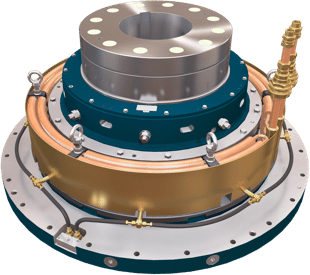 Vertical Bearings
Vertical Bearings
- AV Series
AV
LV SeriesLV
MV SeriesMV
V SeriesV
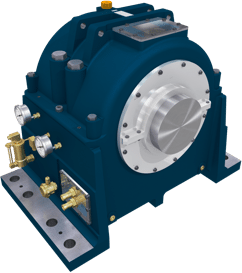 Horizontal Bearings
Horizontal Bearings
- HD Series
HD
IH SeriesIH
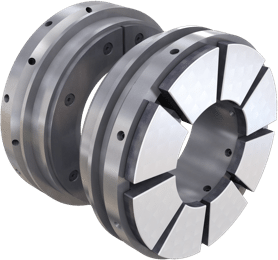 Tilting Pad Bearings
Tilting Pad Bearings
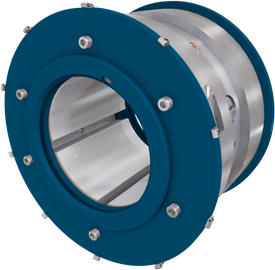 Journal Bearings
Journal Bearings
- Journal Pad Units
Journal
 Thrust Bearings
Thrust Bearings
- SE Series
SE
Omega EqualisedOmega
OmegaOmega
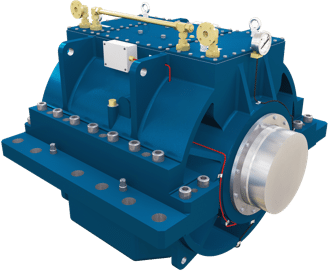 Marine Bearings
Marine Bearings
- Marine Gearbox Internals
Marine
Marine Propulsion Motor
and Generator BearingsEnter your email to download the full paper
"*" indicates required fields
Outline
Home > PTFE Faced Bearings for Marine Propulsion ApplicationsPTFE Faced Bearings for Marine Propulsion Applications
R T Knox, Michell Bearings, UK and J E L Simmons, Heriot-Watt University, UK
Abstract
PTFE faced bearing technology, already established for hydrogenerator use, has been further developed for civil and military marine applications. The paper describes this type of bearing and the advantages compared with conventional babbitt. Details of testing and a description of a PTFE faced thrust bearing supplied for the Japanese Techno Super Liner project are also presented.
Introduction
In 1839 an American, Isaac Babbitt invented a bearing alloy that was to later bear his name – babbitt metal. More generally known in other parts of the world as whitemetal, the material is an alloy of tin (sometimes lead), copper, and antimony. Tin based whitemetals have been the predominant material for a wide variety of hydrodynamic bearings for many years. Their use for thrust surfaces, such as in the multi-collar thrust blocks of the early steam ships, pre-dates the invention of the tilting pad bearing at the start of the last century. The strengths and weaknesses of the material are well known (Barry and Thwaites, 1983). In particular, babbitt provides a dimensionally stable surface that is easily repaired or replaced. The material is able to absorb hard particles of detritus into its surface without causing further damage. On the other hand babbitt has a relatively low melting point and this leads to an upper limit on the temperatures possible during hydrodynamic bearing operation. If this temperature is exceeded, catastrophic failure of the bearing is likely to ensue within a very short period of time. The effect of the babbitt temperature limit is to restrict the maximum duty (expressed as a combination of speed and load) permissible in any particular bearing. As a further consideration, it can be noted that the main constituent of whitemetal, namely tin, is an expensive commodity which has often been in limited availability in many parts of the world.
With the development of the tilting pad and taper-land hydrodynamic thrust bearings at the beginning of the twentieth century it was natural for engineers to continue to work with the material they knew. Although other materials have been developed for hydrodynamic bearing surfaces, including for example, copper-lead alloys, babbitt has remained the world’s preferred choice for most industrial applications.
Almost one hundred years after the invention of babbitt another significant bearing material emerged when, in 1938, Dr Roy Plunkett, a worker at the DuPont research laboratories (Jackson Laboratory in New Jersey), was working with gases related to Freon refrigerants. When checking a frozen, compressed sample of tetrafluoroethylene, Plunkett and his associates discovered that the sample had polymerized spontaneously into a white, waxy solid to form polytetrafluoroethylene or PTFE. The material is still often referred to throughout the world by its DuPont tradename, Teflon.
ACCESS FULL PAPERRecommended articles
Developments in PTFE Faced Thrust Bearings for use in Vertical Pump Applications
Hydrodynamic Bearings Robust Design Ensures Success
PTFE Faced Bearings for Marine Propulsion Applications
PTFE Faced Bearings; Thissavros – A Case Study
Michell Bearings
Waldridge Way,
Simonside East Industrial Park,
South Shields,
NE34 9PZ.Tel: +44 (0) 191 273 0291
Email: sales@michellbearings.com
Email: hrteam@britishengines.com
Email: recruitment@britishengines.com© Michell Bearings.
Registered Office Address: 11 Glasshouse Street, St Peter's, Newcastle upon Tyne. NE6 1BS. Company registered in England and Wales no. 9390648

 PTFE Bearings
PTFE Bearings